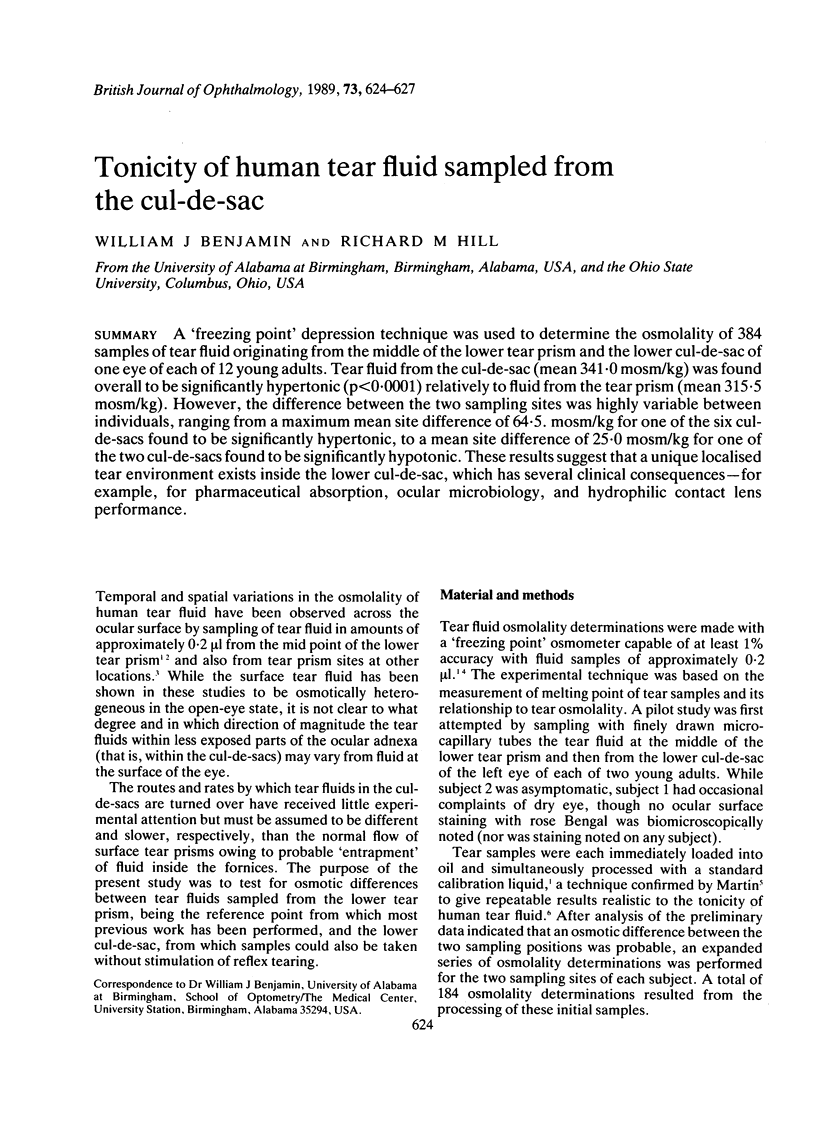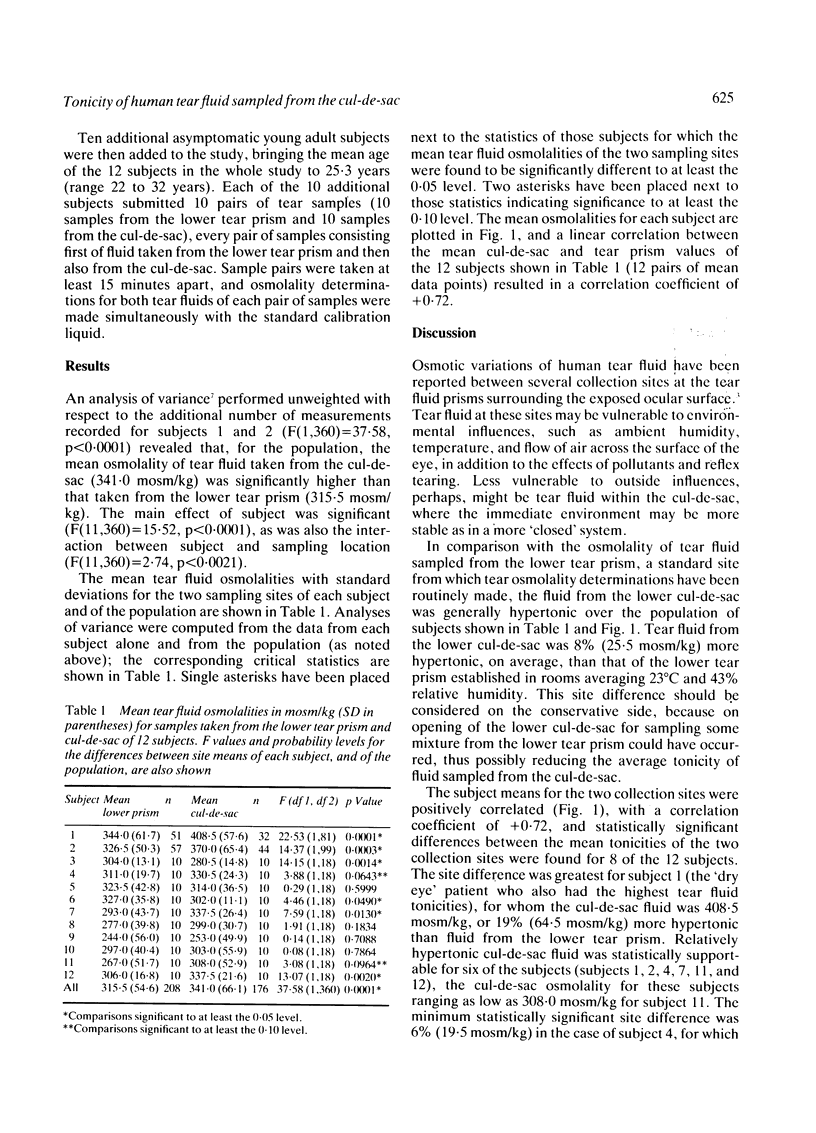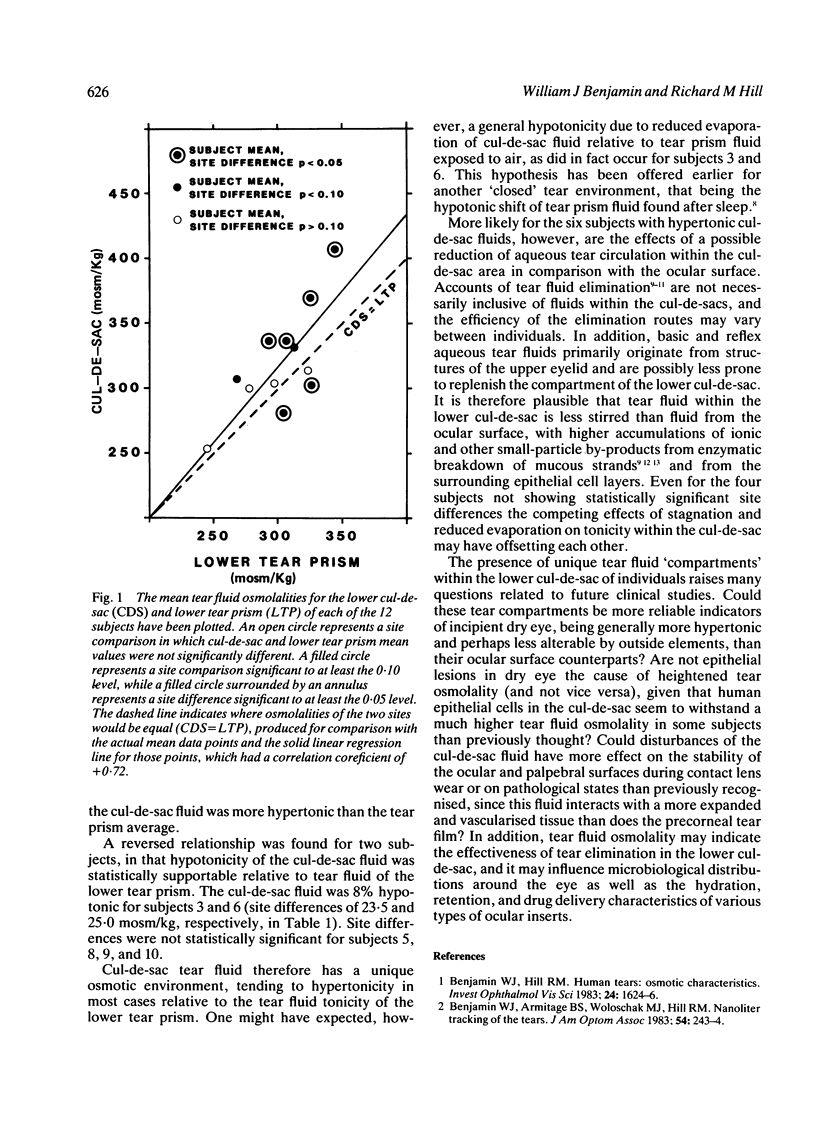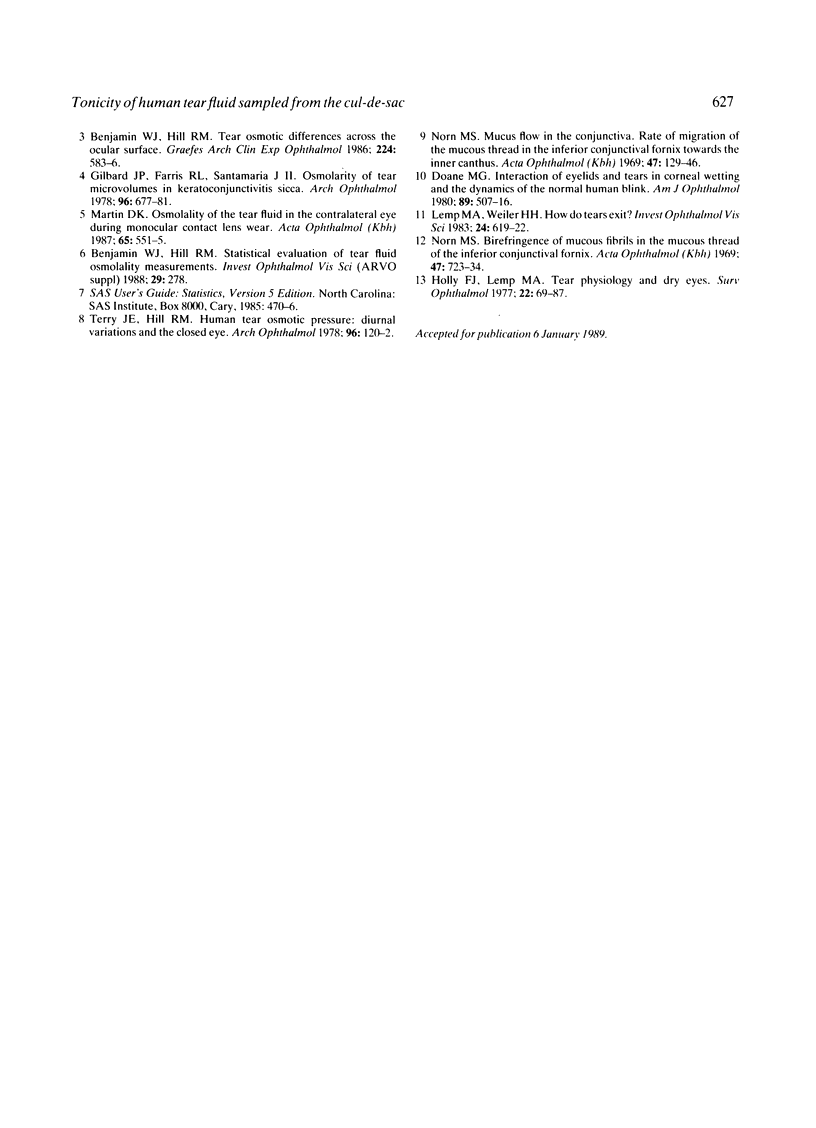Abstract
A 'freezing point' depression technique was used to determine the osmolality of 384 samples of tear fluid originating from the middle of the lower tear prism and the lower cul-de-sac of one eye of each of 12 young adults. Tear fluid from the cul-de-sac (mean 341.0 mosm/kg) was found overall to be significantly hypertonic (p less than 0.0001) relatively to fluid from the tear prism (mean 315.5 mosm/kg). However, the difference between the two sampling sites was highly variable between individuals, ranging from a maximum mean site difference of 64.5. mosm/kg for one of the six cul-de-sacs found to be significantly hypertonic, to a mean site difference of 25.0 mosm/kg for one of the two cul-de-sacs found to be significantly hypotonic. These results suggest that a unique localised tear environment exists inside the lower cul-de-sac, which has several clinical consequences--for example, for pharmaceutical absorption, ocular microbiology, and hydrophilic contact lens performance.
Full text
PDF



Selected References
These references are in PubMed. This may not be the complete list of references from this article.
- Benjamin W. J., Armitage B. S., Woloschak M. J., Hill R. M. Nanoliter tracking of the tears. J Am Optom Assoc. 1983 Mar;54(3):243–244. [PubMed] [Google Scholar]
- Benjamin W. J., Hill R. M. Human tears: osmotic characteristics. Invest Ophthalmol Vis Sci. 1983 Dec;24(12):1624–1626. [PubMed] [Google Scholar]
- Benjamin W. J., Hill R. M. Tear osmotic differences across the ocular surface. Graefes Arch Clin Exp Ophthalmol. 1986;224(6):583–586. doi: 10.1007/BF02154749. [DOI] [PubMed] [Google Scholar]
- Doane M. G. Interactions of eyelids and tears in corneal wetting and the dynamics of the normal human eyeblink. Am J Ophthalmol. 1980 Apr;89(4):507–516. doi: 10.1016/0002-9394(80)90058-6. [DOI] [PubMed] [Google Scholar]
- Gilbard J. P., Farris R. L., Santamaria J., 2nd Osmolarity of tear microvolumes in keratoconjunctivitis sicca. Arch Ophthalmol. 1978 Apr;96(4):677–681. doi: 10.1001/archopht.1978.03910050373015. [DOI] [PubMed] [Google Scholar]
- Holly F. J., Lemp M. A. Tear physiology and dry eyes. Surv Ophthalmol. 1977 Sep-Oct;22(2):69–87. doi: 10.1016/0039-6257(77)90087-x. [DOI] [PubMed] [Google Scholar]
- Lemp M. A., Weiler H. H. How do tears exit? Invest Ophthalmol Vis Sci. 1983 May;24(5):619–622. [PubMed] [Google Scholar]
- Martin D. K. Osmolality of the tear fluid in the contralateral eye during monocular contact lens wear. Acta Ophthalmol (Copenh) 1987 Oct;65(5):551–555. doi: 10.1111/j.1755-3768.1987.tb07039.x. [DOI] [PubMed] [Google Scholar]
- Norn M. S. Birefrigence of mucous fibrils in the mucous thread of the inferior conjunctival fornix. Polarisation microscopy. Acta Ophthalmol (Copenh) 1969;47(3):723–734. doi: 10.1111/j.1755-3768.1969.tb08161.x. [DOI] [PubMed] [Google Scholar]
- Terry J. E., Hill R. M. Human tear osmotic pressure: diurnal variations and the closed eye. Arch Ophthalmol. 1978 Jan;96(1):120–122. doi: 10.1001/archopht.1978.03910050076019. [DOI] [PubMed] [Google Scholar]


